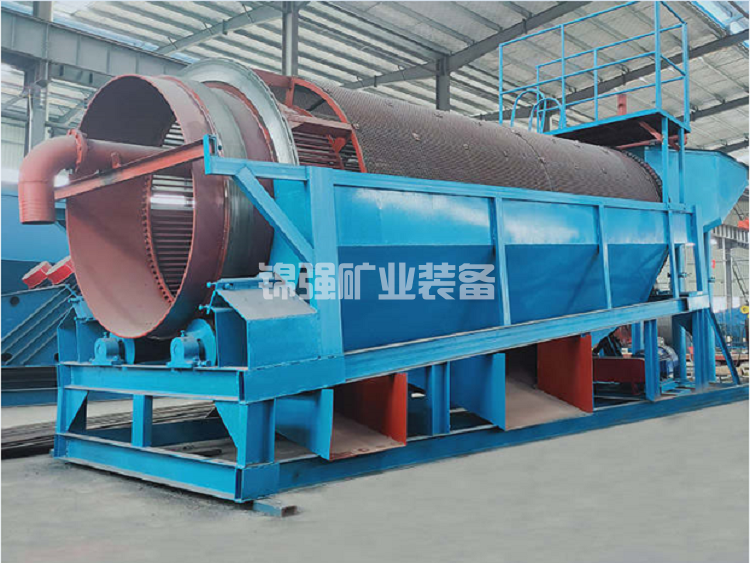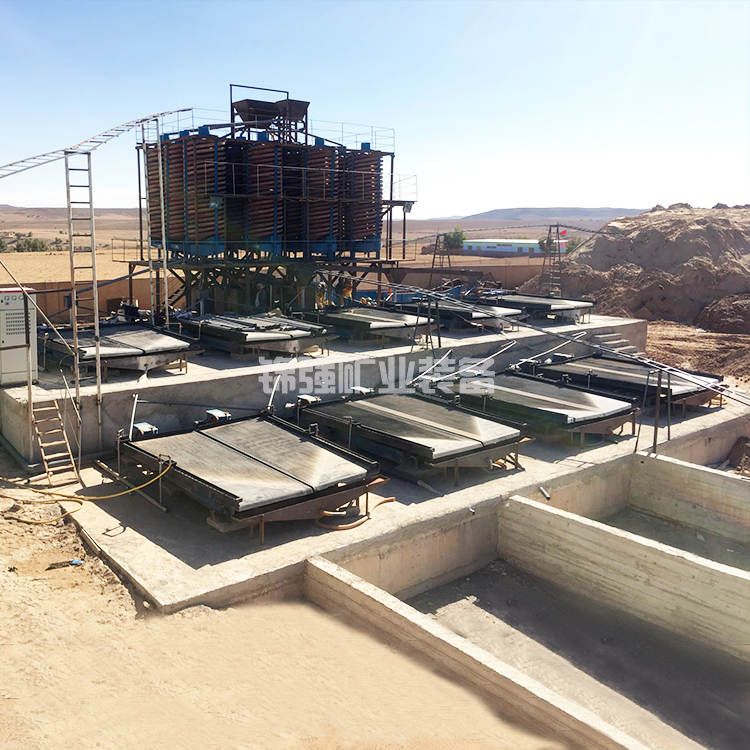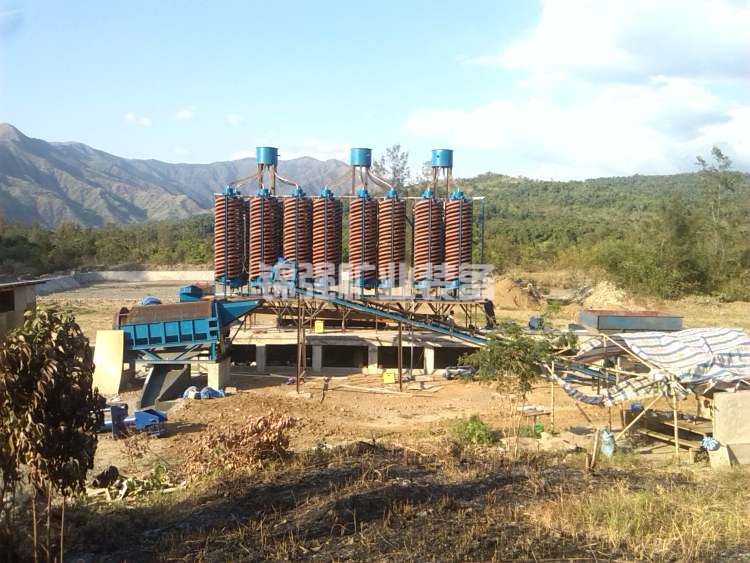 Service Phone:
+8619870423316
Service Phone:
+8619870423316
 Service Phone:+8619870423316
Service Phone:+8619870423316
current location: home > News and information
update date:2023-07-20 02:59:58Number of views: author:锦强设备
Zirconium titanium ore is an important mineral resource, containing zirconium and titanium elements that are widely used in fields such as metallurgy, chemical engineering, electronics, etc. The extraction process of zirconium and titanium is a complex process that requires multiple steps to obtain high-purity zirconium and titanium products. This article will introduce the process flow of zirconium titanium extraction and the operational steps of each step. 1、 Overview of Zirconium Titanium Extraction Process: The extraction process of zirconium titanium ore mainly includes multiple steps such as ore beneficiation, roasting, acid leaching, solution separation, purification, reduction, etc. Among them, roasting, acid leaching and solution separation are the Committed step of zirconium and titanium extraction, and also important factors affecting product quality and cost. 2、 Detailed Explanation of Zirconium Titanium Refining Process Flow  1 Ore beneficiation is the first step in the extraction of zirconium and titanium, with the aim of removing impurities and useless components from the ore and improving the grade of zirconium and titanium. The commonly used beneficiation methods include gravity separation, flotation, magnetic separation, etc. Among these methods, the gravity separation method is the most commonly used method, which separates zirconium titanium ore from the ore through the action of gravity. 2. Roasting is the second step of zirconium and titanium extraction. The purpose of roasting ores is to volatilize sulfides, carbonates and water in zirconium and titanium ores, and transform titanium elements in zirconium and titanium ores into Titanate. Roasting is generally carried out in an oxygen atmosphere at a temperature of 700-1000 ℃.
1 Ore beneficiation is the first step in the extraction of zirconium and titanium, with the aim of removing impurities and useless components from the ore and improving the grade of zirconium and titanium. The commonly used beneficiation methods include gravity separation, flotation, magnetic separation, etc. Among these methods, the gravity separation method is the most commonly used method, which separates zirconium titanium ore from the ore through the action of gravity. 2. Roasting is the second step of zirconium and titanium extraction. The purpose of roasting ores is to volatilize sulfides, carbonates and water in zirconium and titanium ores, and transform titanium elements in zirconium and titanium ores into Titanate. Roasting is generally carried out in an oxygen atmosphere at a temperature of 700-1000 ℃.  3. Acid leaching and acid leaching is the third step of zirconium and titanium extraction. The purpose of acid leaching is to dissolve Titanate and zirconate from calcined zirconium and titanium ores. Commonly used acid leaching agents include sulfuric acid, hydrochloric acid, etc. Acid leaching is generally carried out under high temperature and pressure conditions, with temperatures ranging from 150 to 200 ℃ and pressures ranging from 0.6 to 1.0 MPa. 4. Solution separation: Solution separation is the fourth step in the extraction of zirconium and titanium. The purpose of solution separation is to separate titanium and zirconium from the solution after acid leaching. Common separation methods include solvent extraction, ion exchange, gel chromatography, etc. Among these methods, ion exchange method is the most commonly used method, which separates titanium and zirconium from the solution through ion exchange resin.
3. Acid leaching and acid leaching is the third step of zirconium and titanium extraction. The purpose of acid leaching is to dissolve Titanate and zirconate from calcined zirconium and titanium ores. Commonly used acid leaching agents include sulfuric acid, hydrochloric acid, etc. Acid leaching is generally carried out under high temperature and pressure conditions, with temperatures ranging from 150 to 200 ℃ and pressures ranging from 0.6 to 1.0 MPa. 4. Solution separation: Solution separation is the fourth step in the extraction of zirconium and titanium. The purpose of solution separation is to separate titanium and zirconium from the solution after acid leaching. Common separation methods include solvent extraction, ion exchange, gel chromatography, etc. Among these methods, ion exchange method is the most commonly used method, which separates titanium and zirconium from the solution through ion exchange resin.  5. Purification and purification is the fifth step in the extraction of zirconium and titanium, and the purpose of purification is to improve the purity of zirconium and titanium. The commonly used purification methods include solvent extraction, ion exchange, distillation, etc. Among these methods, solvent extraction is the most commonly used method, which separates impurities from the solution through solvents. 6. Reduction reduction is the final step in the extraction of zirconium and titanium, with the aim of reducing the purified zirconium and titanium into metallic zirconium and titanium. Commonly used reducing agents include aluminum powder, sodium, etc. Reduction is generally carried out under high temperature and pressure conditions, with temperatures ranging from 800 to 1000 ℃ and pressures ranging from 0.1 to 0.2 MPa. 3、 Conclusion: The zirconium titanium extraction process is a complex process that requires multiple steps to obtain high-purity zirconium titanium products. Each step has its own specific operating steps, which require strict adherence to the process flow. In actual production, corresponding adjustments and improvements need to be made according to different ore properties and process requirements to improve product quality and production efficiency.
5. Purification and purification is the fifth step in the extraction of zirconium and titanium, and the purpose of purification is to improve the purity of zirconium and titanium. The commonly used purification methods include solvent extraction, ion exchange, distillation, etc. Among these methods, solvent extraction is the most commonly used method, which separates impurities from the solution through solvents. 6. Reduction reduction is the final step in the extraction of zirconium and titanium, with the aim of reducing the purified zirconium and titanium into metallic zirconium and titanium. Commonly used reducing agents include aluminum powder, sodium, etc. Reduction is generally carried out under high temperature and pressure conditions, with temperatures ranging from 800 to 1000 ℃ and pressures ranging from 0.1 to 0.2 MPa. 3、 Conclusion: The zirconium titanium extraction process is a complex process that requires multiple steps to obtain high-purity zirconium titanium products. Each step has its own specific operating steps, which require strict adherence to the process flow. In actual production, corresponding adjustments and improvements need to be made according to different ore properties and process requirements to improve product quality and production efficiency.